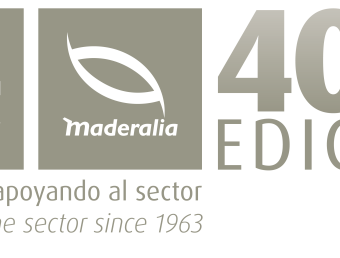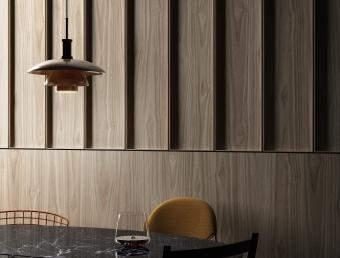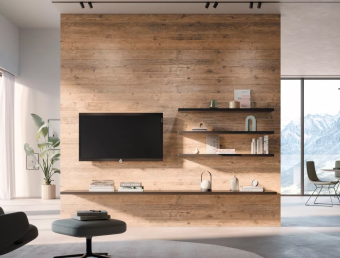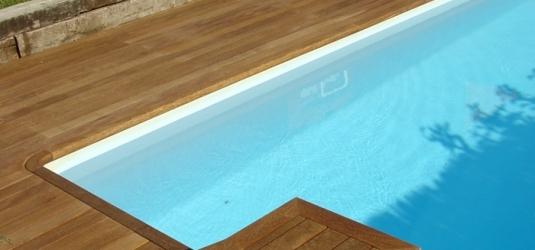
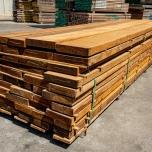
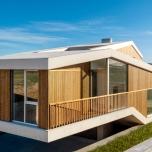
Types and species of Wood for the exterior
When we look for woods for exteriors, we refer to those that are naturally suitable for being outdoors. That is, humidity, fungi, insects or even the sun affect them to a lesser extent.
These are especially in demand for use as decking, terraces, wall cladding, manufacturing structures and even furniture. It is in these uses where consumers look for additional features, such as resistance to shock, humidity and/or insects.
Under the EN-335 standard we find 5 classes of use defined. Being from 3 to 5 those that refer to exterior uses:
- Class 1: Indoor use with humidity less than 20%.
- Class 2: Indoor use with humidity greater than 20%.
- Class 3.1: Outdoor use, without contact with the ground and protected with humidity normally less than 20%.
- Class 3.2: Outdoor use, without contact with the ground and protected with humidity normally higher than 20%.
- Class 4: In contact with the ground or vertically with humidity permanently higher than 20%.
- Class 5: In direct contact with seawater
What is the most resistant wood for the exterior?
Tropical woods have a dark appearance, for the most part, and very exotic. Tropical woods originate from countries in Africa, South America or Asia. They are usually wood from large trees. The trunks of the tropical woods are long, strong and homogeneous. There are different and varied types of tropical wood, the most contrasting types of wood are those of Iroko, Elondo-Tali and Ipé.
Iroko Wood- Iroko wood is a type of tropical wood well known for its strength. It is a very versatile wood and used in floors and platforms. It is a type of wood very similar to Teak wood, with the difference that iroko is lighter.
Ipé wood- Ipé wood is one of the species best known by professionals in the sector due to its extraordinary characteristics. It has incredible hardness and resistance. It is a tropical species that we can find in Central America and northern South America, from Brazil. It is not an endangered species and production is constant.
Elondo-Talí wood- Elondo wood, also known as Tali wood, is called Bolondo in some areas of Spain. It is a quality tropical wood characterized among other things by its hardness. In addition, in terms of price, it is one of the best positioned of all the recommended outdoor species. We can find it mainly in some areas of Africa.
At Gabarró we sell Lunawood heat-treated wood (Luna Thermo-D).
The wood used is Nordic Pine and Fir. LunaThermo-D is thermally modified using high temperatures (212ºC) and the products are suitable for exterior and interior use. Its durability and stability are significantly improved.
Class of Use and Risk- It is suitable for applications in class of use or risk 3 (UNE-EN: 335): "Situation in which wood or material derived from wood is above ground and exposed to the weather ( in particular to the rain). Its use is suitable for exterior cladding, ventilated facades, outdoor decking and many other outdoor applications. Lunawood heat-treated lumber is not recommended for use in direct contact with the ground.
Durability- LunaThermo-D, with a durability class 2 (UNE-EN: 350), is “durable”, and carries an endorsement from the British Research Establishment (BRE) indicating an expected useful life of 30 years
Pine wood is normally used, since it is impregnable and of low density. Fir is not used as it is not very impregnable. The autoclave treatment penetrates approximately 3mm, for this reason the pieces are sold already polished. Autoclaved wood has risk class 4. Autoclaved treatment does not penetrate the heartwood.
How to care for wood
Wood is a noble material that breathes, is alive and continuously exposed to different factors that can degrade it. It is necessary to prepare the wood to eliminate or minimize these factors and achieve a perfect and lasting final finish. A correct preparation of the wood is the key so that its original properties and its natural beauty last over time.
Wood-eating insects (woodworms) and fungi or bluing attack the wood and cause mechanical and aesthetic damage. Cedria treatments resolve these situations and their pernicious effects, ending insect attacks, curing the affected wood and cleaning any remaining woodworm.
Lasures, varnishes, enamels and Cedria specialties protect and enhance the natural beauty of all types of wood. This is thanks to its water-based technology, the use of nanoparticles and formulations with components of plant origin. In addition, they are products that respect the environment and people's health.
